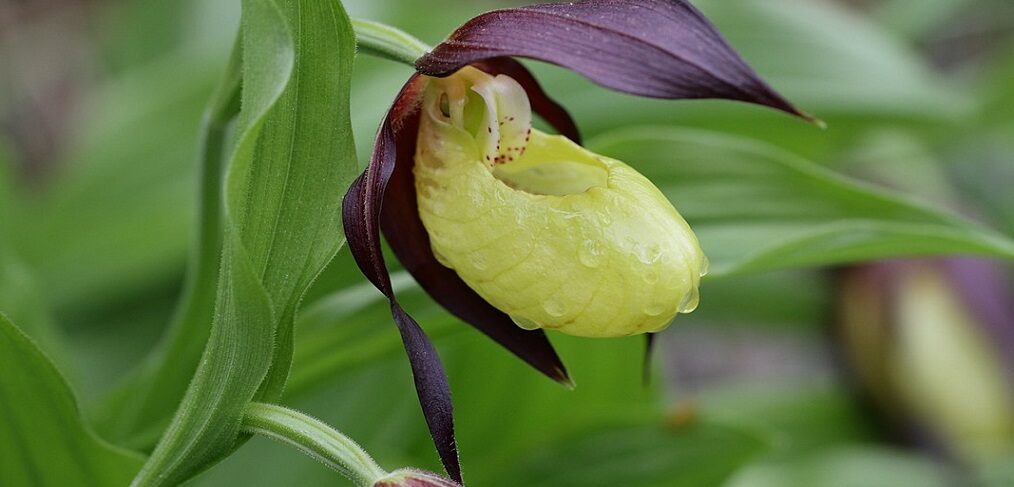
Species of the week #19( week 22-2020 )-the lady slipper
The Lady’s Slipper, whose European species is also known as the “Yellow Lady’s Slipper”, is the most well-known and most striking orchid species in Rhineland-Palatinate. About 5 cm long, protruding, reddish-brown petals surround a large, yellow, slippery, bulbous lip reminiscent of pumps. Hence the name.
As a semi-shade plant, Lady’s Slipper is often found in bushes and in the hem of mixed pine forests together with other orchid species, such as the Mosquito’s Handleberry or the Red Forest Bird. The Lady’s Slipper is considered to be a characteristic species of orchid-beech forests.
| Distribution status |
Extremely rare |
| Remaining deposits | Daun, Bollendorf |
| Last sighting in Rhineland-Palatinate | 2010 |
| Habitat | light forests on calcareous, base-rich loam, clay and raw soils |
| Threat | Picking and digging up wild stocks, afforestation |
The ingenious pollination mechanism has already been described by Charles Darwin: The red dotted lip of the flower is a trap. Insects that crawl or fall into the cauldron can no longer leave it through the entrance. The oily-smooth inner wall of the lip forces the insects to follow a predetermined path in the area of the “heel” of the shoe. The two lateral exits are illuminated by translucent windows and lead through a hair staircase to the outside. On the “ceiling” of the narrow, lateral exits, the scar protrudes downwards, on the inner edge there is a dust bag in each case. When squeezing through, the insect first wipes off any pollen it has brought with it at the scar and then reloads itself with the dusty, sticky pollen grains.
Sharp declines in population were and are caused by picking and digging up the attractive plants. The decline of light forests additionally deprives the lady slipper of its habitat. Flowers are no longer formed on shadier sites and wild bees no longer fly to the few remaining flowers. The main pollinators, various species of sand bees, depend on raw soils (sandy or stony soils without humus) in which they nest. These habitats are also in severe decline. The formerly large occurrences of lady slipper, especially in the Middle Rhine area and the Eifel, have now almost disappeared.
Politically necessary:
- Targeted public relations work to protect wild orchids
- Conservation of light forests
- Minimization of game populations to avoid browsing
- Preservation of raw soil sites
Picture: From spacebirdy(also known as geimfyglið (:> )=| made with Sternenlaus-spirit) – Own work, CC BY-SA 3.0, https://commons.wikimedia.org/w/index.php?curid=19507772
An overview of all species of the week can be found here
